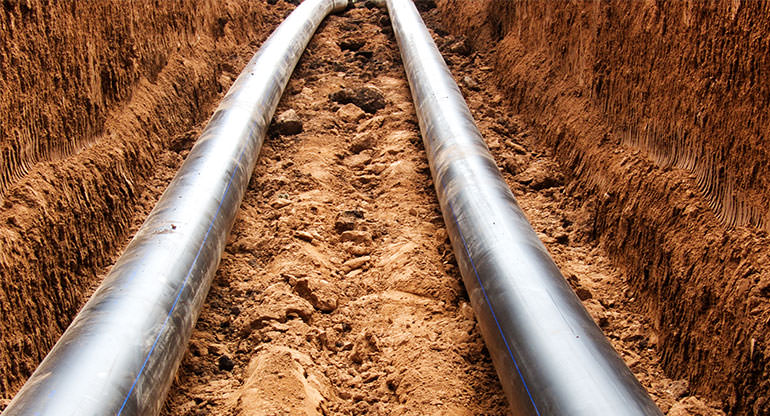We’ve always needed energy to heat our homes. For the vast majority of human existence, we’ve gotten that energy from natural materials—first firewood, then slower-burning natural oil, then fossil fuels. But while we were gathering materials to consume, we were also busy discovering perhaps the most obvious source of heat apart from the sun—the earth itself.
According to Energy.gov, humans first discovered geothermal energy some 10,000 years ago when Native Americans heated themselves in naturally-occurring hot springs. Ever since, we’ve been trying to figure out how best to utilize the earth’s warmth. We’ve built towns on hot springs, heated homes with piped-in hot water, and even built power plants that run on steam. But even with all that progress, we as Americans have struggled to implement an energy-efficient geothermal system in a cost-effective way on a large scale.
Until now.
Enter Ball State
It gets cold in Indiana. Heating an entire college campus is expensive, and burning fossil fuels to do so is hardly energy efficient. Luckily, Ball State University, located in Muncie, Indiana, has launched an ambitious project that, if all goes right, will reduce campus carbon footprint by nearly one half. Engineers at Ball State have bored hundreds of holes into the ground around campus to access the heat of the earth. They can now turn that heat into a sustainable source of energy.

It’s an amazing process, and it’s called a geothermal energy system. The earth’s energy warms water, which travels through pipes that snake throughout the campus, alternatively warming or cooling—whichever is necessary—any given indoor area. The investment, like most energy-saving ventures, is a true win-win-win. The campus will save money, create a culture of environmental sustainability, and create thousands of contracting jobs while they’re at it. How cool is that?
Energy-Efficient Retail Options
So good for Ball State. A college campus has the resources to implement a dynamic change like redoing its entire heating system. But how does that affect you?
We’re glad you asked! Thanks to a new startup called Dandelion Energy, Inc.—and its new partner, Aztech Geothermal—you can build your own geothermal heating system for your very own home.

“Dandelion is making geothermal heating and cooling affordable by introducing a number of process and technology innovations, including analytics-based marketing, fixed system pricing, a low monthly payment option, and an innovative drilling method,” Green Builder Media writes.
So what are you waiting for? Geothermal energy is the wave of the . . . present. Harness it, and invest in your future!
Photo Credits: Ball State University Campus, Dandelion Energy, Inc.


 Electric cars obviously have a bigger positive impact on the environment because they have zero CO2 emissions, but they also have a lower driving range and a higher price tag. That said, in recent years the range has grown higher and the cost has come down, with even more of that promised from car manufacturers in the coming years. Electric cars also require less maintenance than hybrids, not to mention the fact that you’ll never have to pay for gas again. So, if you don’t have a long commute to work, an all-electric car might be a great option for you. An all-electric car is also perfect for two-car families: use the electric car for daily driving around town and a regular car or hybrid with a higher range for longer road trips.
Electric cars obviously have a bigger positive impact on the environment because they have zero CO2 emissions, but they also have a lower driving range and a higher price tag. That said, in recent years the range has grown higher and the cost has come down, with even more of that promised from car manufacturers in the coming years. Electric cars also require less maintenance than hybrids, not to mention the fact that you’ll never have to pay for gas again. So, if you don’t have a long commute to work, an all-electric car might be a great option for you. An all-electric car is also perfect for two-car families: use the electric car for daily driving around town and a regular car or hybrid with a higher range for longer road trips. The money-saving perks of driving an eco-friendly car go way beyond less money spent on gas. The current federal tax credit for a new all-electric car is $7,500. The federal tax credit for a new hybrid ranges from $2,500 to $7,500. Follow these links to see which electric and hybrid cars are eligible. Many states offer incentives as well, including cash rebates, carpool lane access and free municipal parking. You can even save money on your power or insurance bill if your provider offers a special rate for
The money-saving perks of driving an eco-friendly car go way beyond less money spent on gas. The current federal tax credit for a new all-electric car is $7,500. The federal tax credit for a new hybrid ranges from $2,500 to $7,500. Follow these links to see which electric and hybrid cars are eligible. Many states offer incentives as well, including cash rebates, carpool lane access and free municipal parking. You can even save money on your power or insurance bill if your provider offers a special rate for  You can still drive the next best thing. Each year, the Environmental Protection Agency awards SmartWay certifications to the top 20 percent of the cleanest, most efficient vehicles. You can search the EPA’s list of certified cars starting in the model year 2000 by
You can still drive the next best thing. Each year, the Environmental Protection Agency awards SmartWay certifications to the top 20 percent of the cleanest, most efficient vehicles. You can search the EPA’s list of certified cars starting in the model year 2000 by